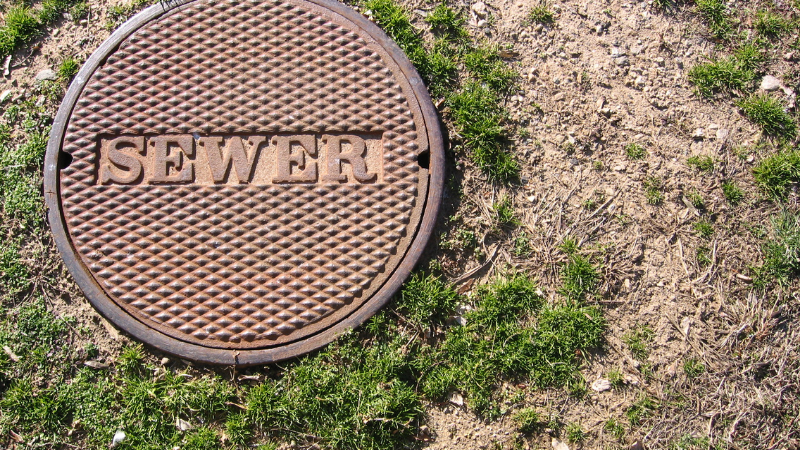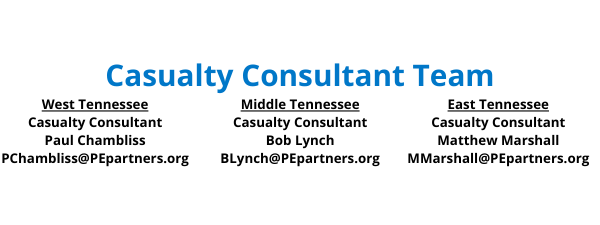Sewer Backup and Overflow Prevention Program
- Author | Halie Gallik
- 6/9/2022 8:00 am

Four Steps for Creating an Effective Sewer Backup and Overflow Prevention Program
Entities that operate sewer systems unfortunately experience occasional backup or overflow events. When one of these events occurs, do your employees and elected officials know how to respond? Do you know who is responsible for property damage? And do you understand what liability coverage is in place to protect your entity from lawsuits or claims?
Four key steps can help you create an effective backup and overflow prevention program, and manage the liability associated with your sewer system. These steps include:
1. Document complaints about backups.
Public Entity Partners’ casualty loss control consultants can work with you as you evaluate the processes you have in place to document complaints and backups within your system.
Documentation should include:
- Name of the individual making the complaint
- Location of the backup
- Date and time you received the complaint
- Who received the complaint
- Action you took regarding the complaint
All system inspections, maintenance and repairs should also be documented, along with the dates they were performed, the name(s) of the personnel who completed them and the results.
2. Map out your system.
Most sewer systems are mapped. Your system’s map should include numbered manhole covers, all lift or pump stations, and the location of complaints. This will help you track complaints and identify areas of your system that may need to be fixed.
3. Fix the problem areas.
Your ongoing schedule of system inspection, cleaning and preventative maintenance should exist in writing. This is documented proof that you are taking care of your system. As you move through the schedule, focus on problem areas within your system. Plan and schedule cleaning for these areas at least twice a year. An uninspected line that hasn’t been cleaned is typically responsible for backups.
4. Educate employees and the public about their responsibilities during a sewer backup or overflow event.
The manner in which your personnel communicate with residents who experience the trauma of a backup can influence whether your entity is sued. Your personnel should always treat citizens with concern for their problems. Personnel should be ready to answer what actions will be taken in response to an issue, and by whom and when they will occur. You can also consider suggesting precautions to prevent these types of events in the future.
Your employees should never discuss who is at fault for a backup or overflow. Sometimes employees say things that make residents believe the overflow is your entity’s responsibility or fault. Educate your employees so they understand that responding to a sewer backup or overflow event does not mean accepting responsibility for the damage.
Create educational documents, fact sheets and/or brochures detailing the causes of backups and overflows. Explain that cooking grease, diapers and debris should be kept out of sinks, toilets and drains, as these materials can cause backups and overflows.
Residents should be encouraged to have a backflow device, and understand they are responsible for maintaining their lateral line.
These four steps are key to identifying areas of concern within your sewer system and proactively working to fix issues. A program of this nature will not only reduce the number of backups experienced in your system, but will also demonstrate the duty of care that you exercise, reducing your potential liability for these types of events.
Any local government employee or elected official who may receive a complaint from the public should have a basic understanding of your sewer backup prevention program — and where to direct a complaint so it can be properly documented. Again, never admit or assume liability until a determination is made by your claims adjuster. If you accept responsibility for a backup before the claims adjuster has investigated, you could put your coverage in jeopardy.
If you have questions as you evaluate your sewer backup and prevention program, please reach out to your casualty loss control consultant.

Categories
-
Annual Report
(5)
-
Audit Requests
(2)
-
Board of Directors
(17)
-
Claims
(26)
-
Cyber Extension
(4)
-
Cyber Security
(27)
-
Dividend
(7)
-
EHS Hero & HR Hero
(16)
-
Employment Practices Liability
(26)
-
Excellence In Risk Management Awards
(18)
-
Fireworks
(1)
-
First Responders
(9)
-
Grants
(22)
-
Law Enforcement
(16)
-
Local Government Risk Academy
(4)
-
Loss Control
(102)
-
Member Services
(11)
-
Message From the President
(18)
-
MTAS
(10)
-
Municipal Sewer System
(4)
-
Partnering for Success Webinar Series
(28)
-
PEP Staff
(31)
-
Qualified Immunity
(3)
-
Risk & Insurance Symposium
(41)
-
Safety Program
(56)
-
Scholarships
(19)
-
Social Media
(2)
-
Training
(76)
-
Underwriting
(32)
-
Workers' Compensation
(27)
- Annual Report (5)
- Audit Requests (2)
- Board of Directors (17)
- Claims (26)
- Cyber Extension (4)
- Cyber Security (27)
- Dividend (7)
- EHS Hero & HR Hero (16)
- Employment Practices Liability (26)
- Excellence In Risk Management Awards (18)
- Fireworks (1)
- First Responders (9)
- Grants (22)
- Law Enforcement (16)
- Local Government Risk Academy (4)
- Loss Control (102)
- Member Services (11)
- Message From the President (18)
- MTAS (10)
- Municipal Sewer System (4)
- Partnering for Success Webinar Series (28)
- PEP Staff (31)
- Qualified Immunity (3)
- Risk & Insurance Symposium (41)
- Safety Program (56)
- Scholarships (19)
- Social Media (2)
- Training (76)
- Underwriting (32)
- Workers' Compensation (27)